Global growth slowing as policy easing accelerates
Global growth momentum has softened somewhat in recent months, led by slower growth in the world’s major economies.
We see this global growth slowdown as, for the most part, consistent with the lagging impact of higher central bank rates, rather than a slide to a global hard landing.
Importantly, with inflation now in a relatively clear cyclical downswing, global interest rates are set to come down significantly.
Figure 1: Global growth is slowing but remains reasonable
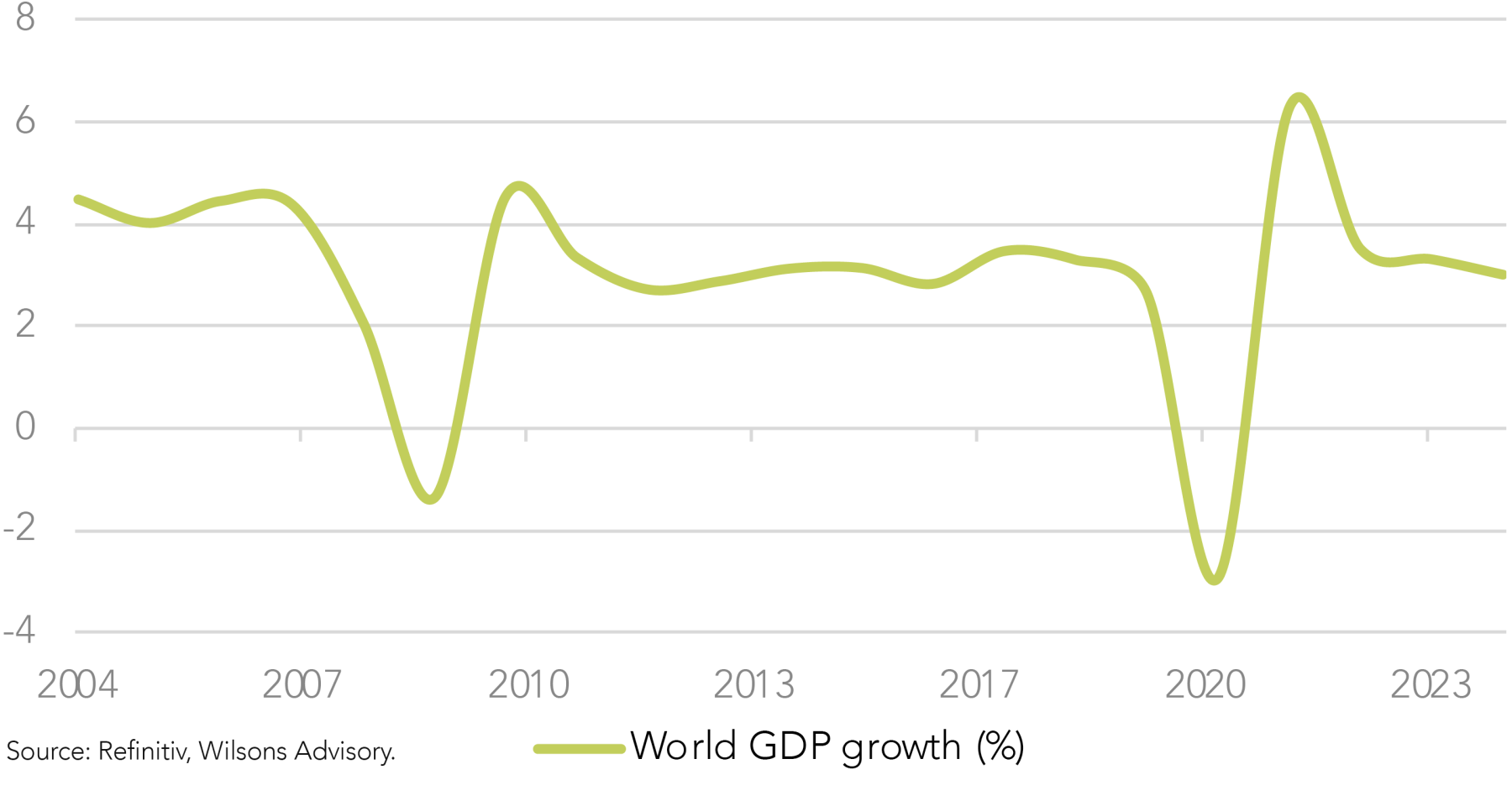
Figure 2: Global data has come in below consensus in recent months
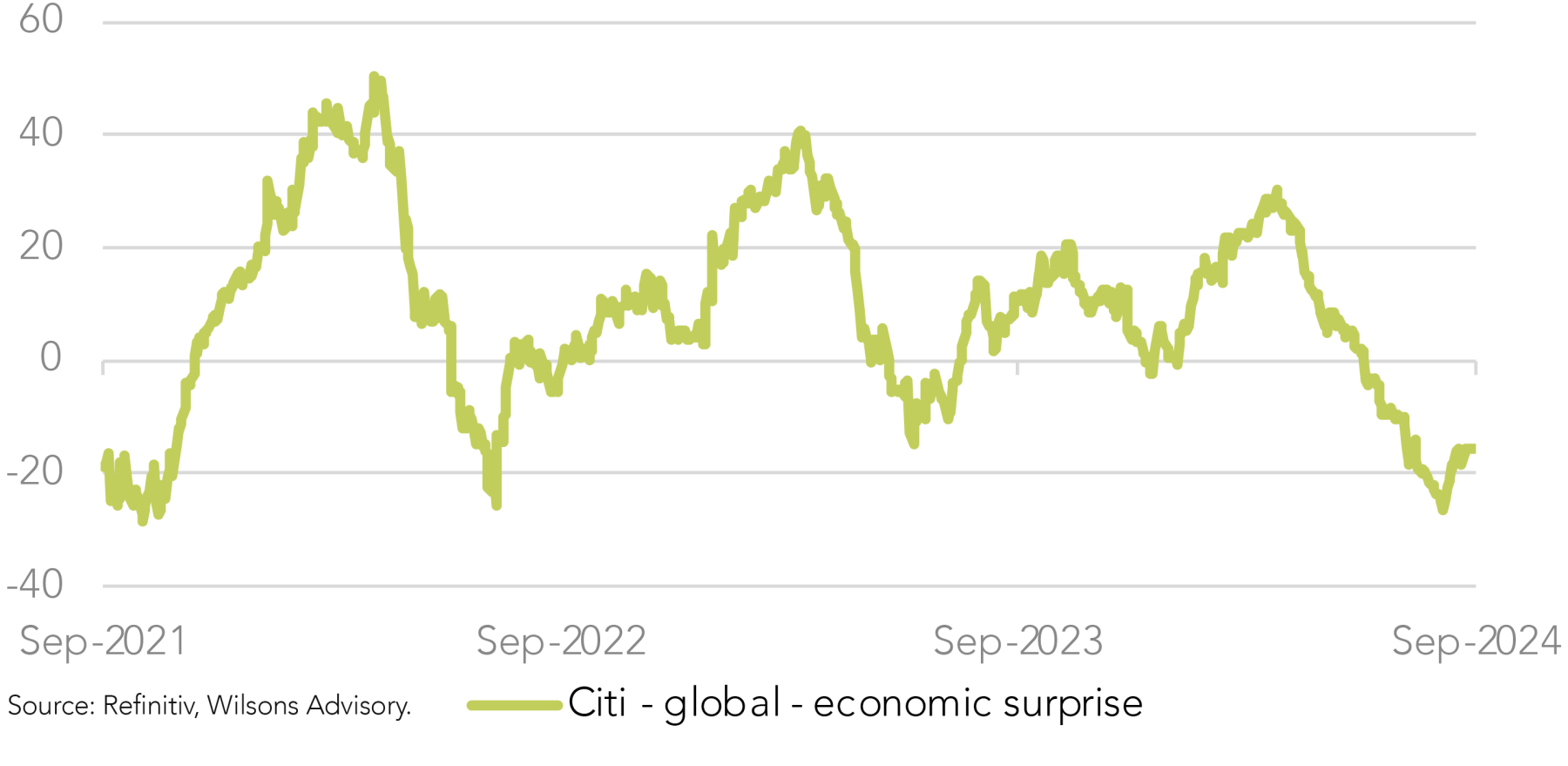
Figure 3: Global inflation is easing, allowing for lower policy rates
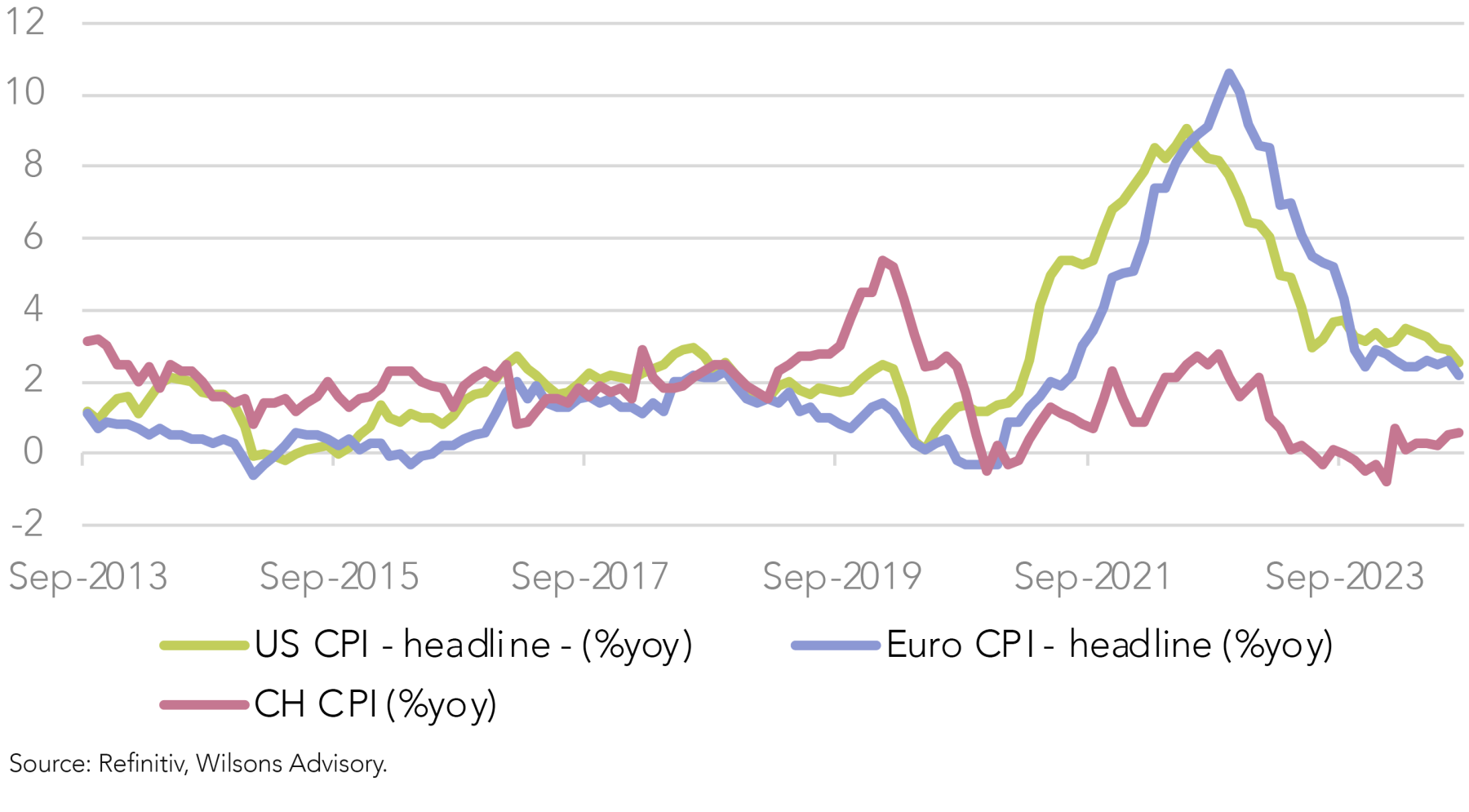
Policy momentum begins to build
The ECB kicked off their easing cycle in June with a 25 basis point cut, and followed up with another 25 basis point cut earlier this month. The interest rate markets expect the ECB to cut by at least another 25 basis points this year, and then by at least 100 basis points next year. This would take their headline policy rate to about 2% by the end of 2025.
Last week saw the US Federal Reserve (the Fed) kick off their all-important easing cycle, cutting the policy rate by 50 basis points. This cut was larger than the consensus expectation of economists (25 basis points), but largely in line with the pricing embedded in the interest rate futures curve.
The interest rate markets expect the Fed to cut by at least another 50 basis points this year (there are two more meetings this year). The Fed is then expected to cut by a further ~125bp in 2025. If markets are right, this would take the Federal funds rate to ~2.8% by the end of 2025.
While monetary policy works with a lag, we expect this significant policy easing to help reinvigorate global growth by the middle of next year. Further softening in the global economy in the near-term is likely, although prospects for a global soft landing appear relatively good in our view.
Figure 4: US policy rates are expected to fall significantly
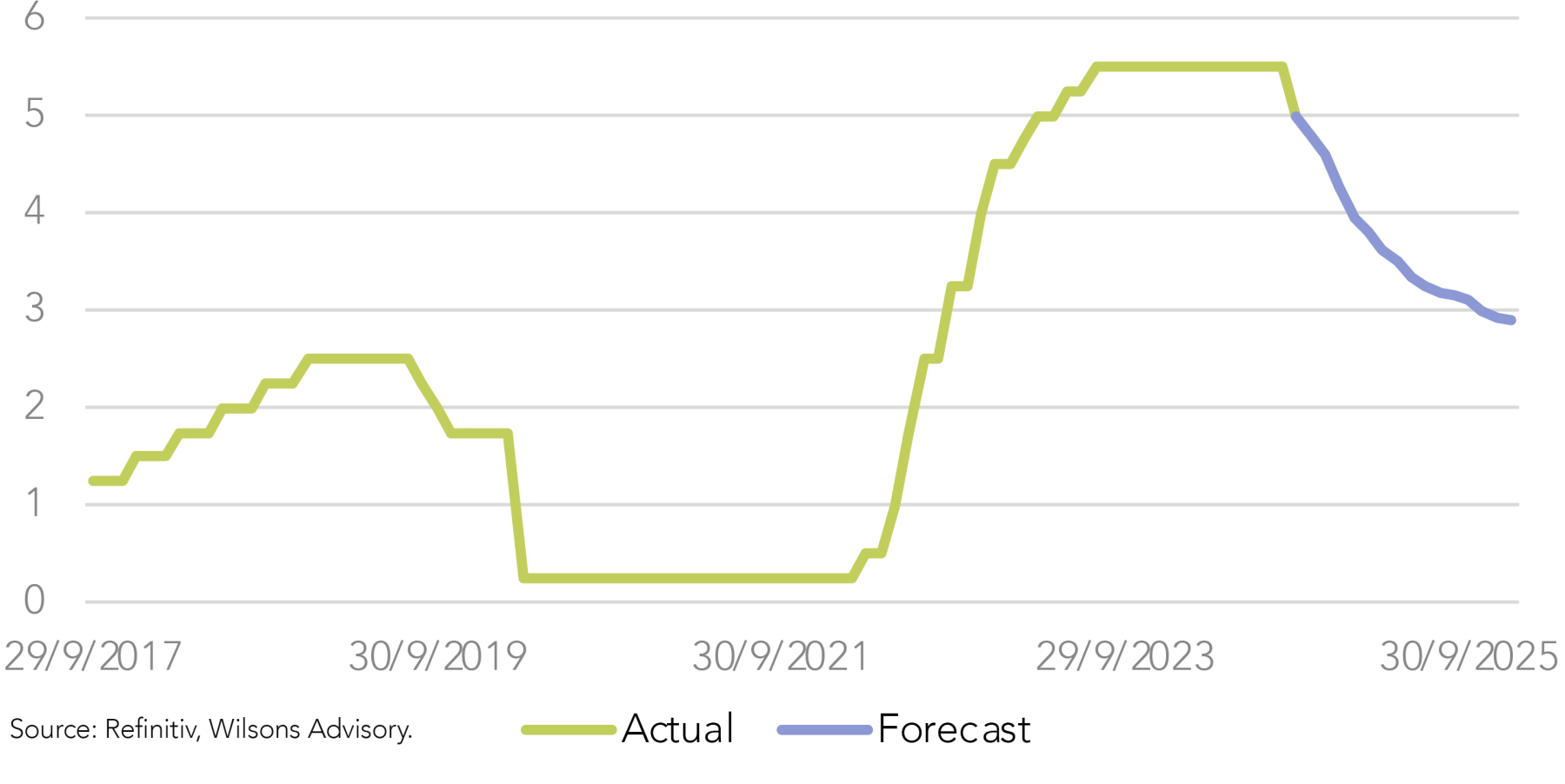
Figure 5: Eurozone policy rates are expected to fall significantly
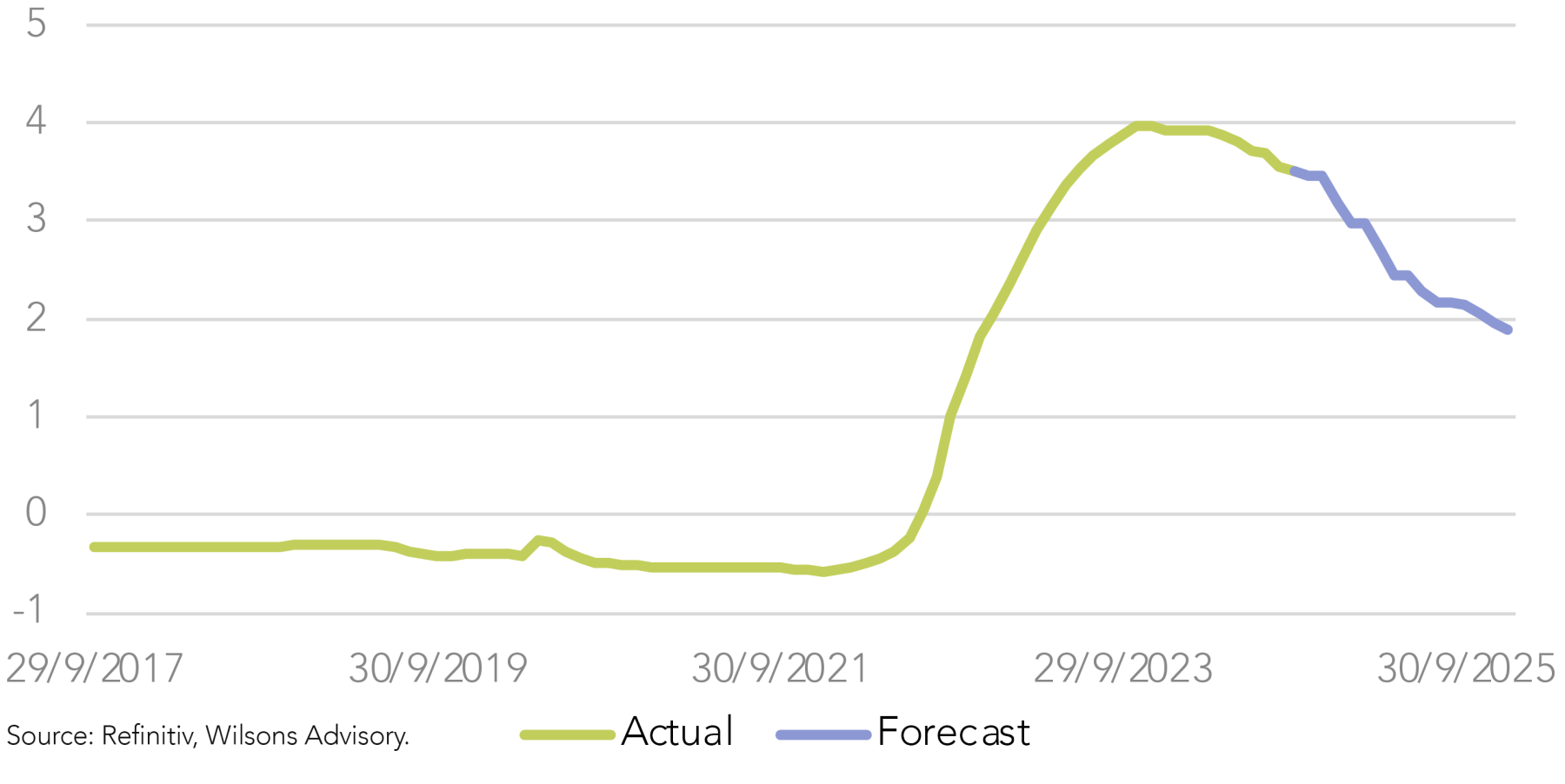
Hard landing drivers not in place
Hard landings (recessions) are often caused by “exogenous” factors such as balance sheet excess. At present, we only see clear balance sheet excesses in China (property) and developed market governments (large fiscal deficits). In general, household and corporate sector balance sheets appear sound. Excess investment is another historical recession trigger. Once again, we only see clear evidence of this in the Chinese property sector. Finally, involuntary accumulation of inventory has traditionally been another recession trigger. In this respect, the global destocking cycle has actually been underway for some time, with scope for some re-stocking over the coming year.
China and the US Election as risk factors
As a result of its historical “excesses”, a key source of uncertainty around the global economic outlook remains China. China appears to have the most significant headwinds to growth from a structural perspective. Despite China’s significant structural problems, however, it is still managing to eke out economic growth well ahead of developed market economies, albeit well below its historical pace. China has set a target of 5% GDP growth for 2024. Most economists have now downgraded their estimate for China’s GDP growth in 2024 to around 4.5%, following several months of disappointing data. Weakness is centred in the housing sector, with that portion of the economy now contracting. This has spilled over to the household sector, primarily from the impact on consumer sentiment as house prices continue to fall. In contrast, infrastructure investment continues to be strong.
The export sector also continues to expand at a strong pace, although the sustainability of China’s export push is questionable, given the both the slowdown in Western economies and the political sensitivities around China’s bilateral trade imbalances.
It is hard to predict whether China will ultimately aggressively stimulate its domestic economy, or be content with its current comparatively modest expansion. A Western-style crisis does not appear to be on the cards given the command nature of the Chinese economy, but the world is having to adjust to a slower demand pulse from China relative to what it has become accustomed to over the last ten to 20 years. Other emerging countries, such as India, are at least partially filling the breach with robust growth cycles (growth was 6.7% in the year to June 2024), but the China growth hole is a big one to fill.
Figure 6: China's growth rate has not sustained pre-COVID levels
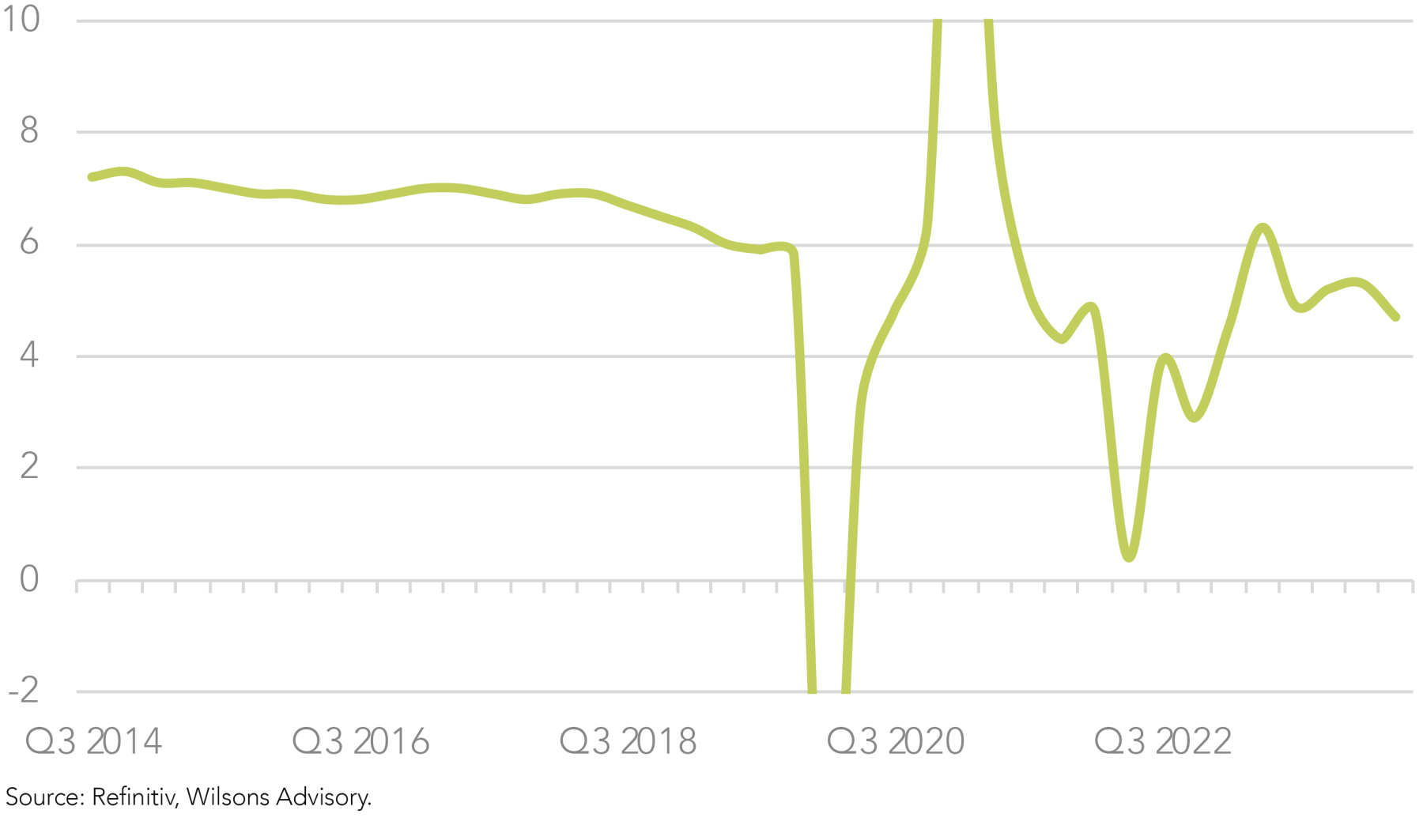
Overall, we believe the world can cope with a slowing Chinese economy. However, economies such as Australia have become very reliant on Chinese demand in key commodity segments, namely iron ore. Australia needs to prepare for a less favourable structural backdrop in key markets such as iron ore, and the resulting pressure on national income and the federal budget.
A potential wildcard for the global economy is the US presidential election. In particular, former president Trump’s aggressive tariff pledge (including a 60% tariff on Chinese goods) shapes as a risk to the global growth cycle, particularly when the impact of likely retaliatory measures is factored in. Of course, Trump still needs to win the election, which remains too close to call. If he does win, Trump may ultimately water down his tariff pledge. However, an aggressive tariff stance would be a significant headwind for the global economy if it actually comes to pass. At this stage, much like the market, we remain in wait-and-see mode with respect to both the outcome of the US election, and the ultimate policy platform of the winning candidate.
Overall, our base case is for the global economy to undergo a relatively benign slowdown, followed by a modest pick-up in the second half of next year, as the impact of a relatively coordinated global easing cycle kicks in.
China’s structural problems and the US election shape as sources of uncertainty to this relatively benign central case. There is also a degree of uncertainty around the behaviour of inflation, if and when the global economy emerges from its current softer phase of growth. However, we feel this may be an issue for 2026, if it proves to be an issue at all.
Figure 7: The oil price has eased as global demand softens
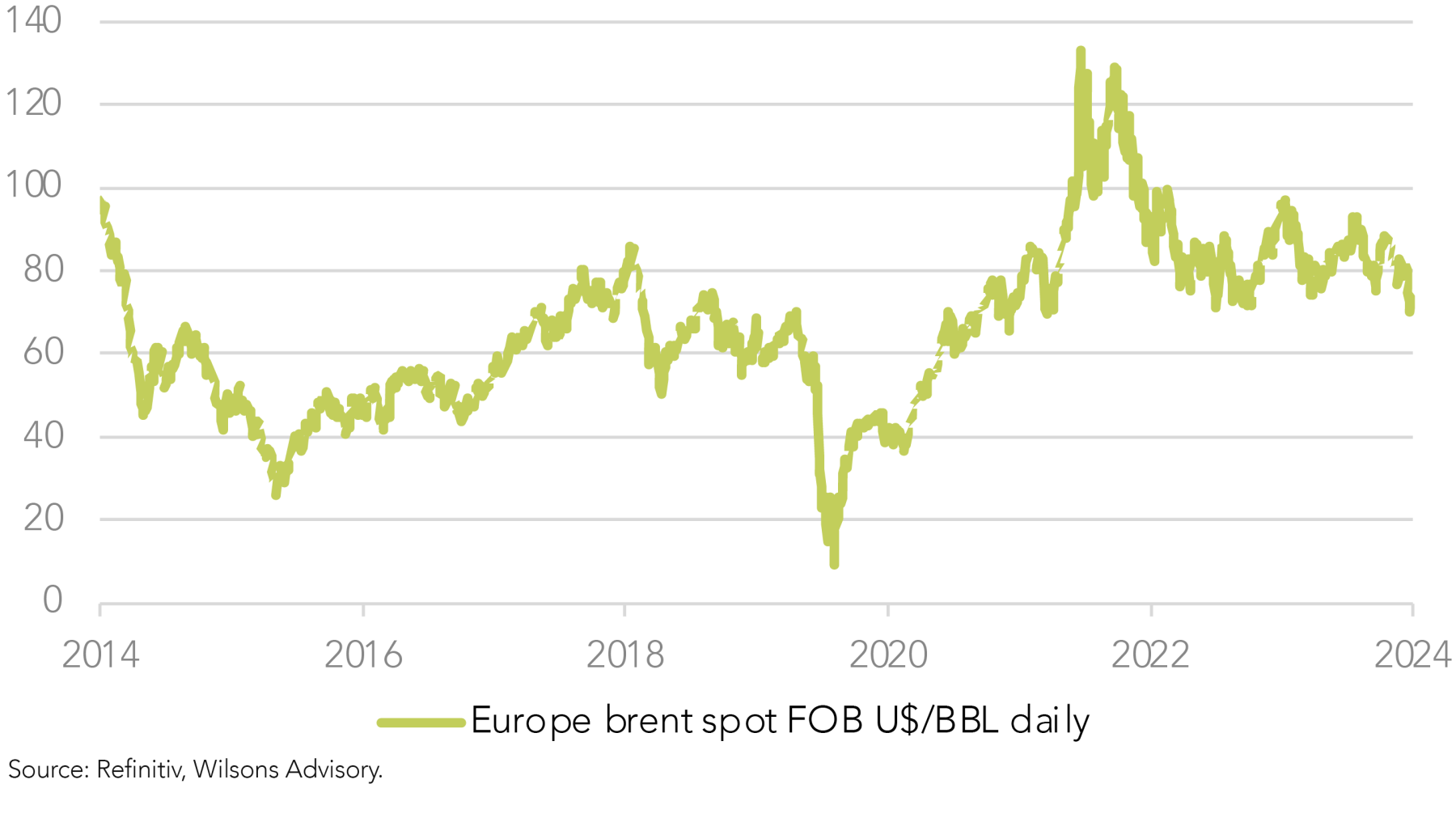
Figure 8: The copper priced has eased but remains strong, supported by tight supply
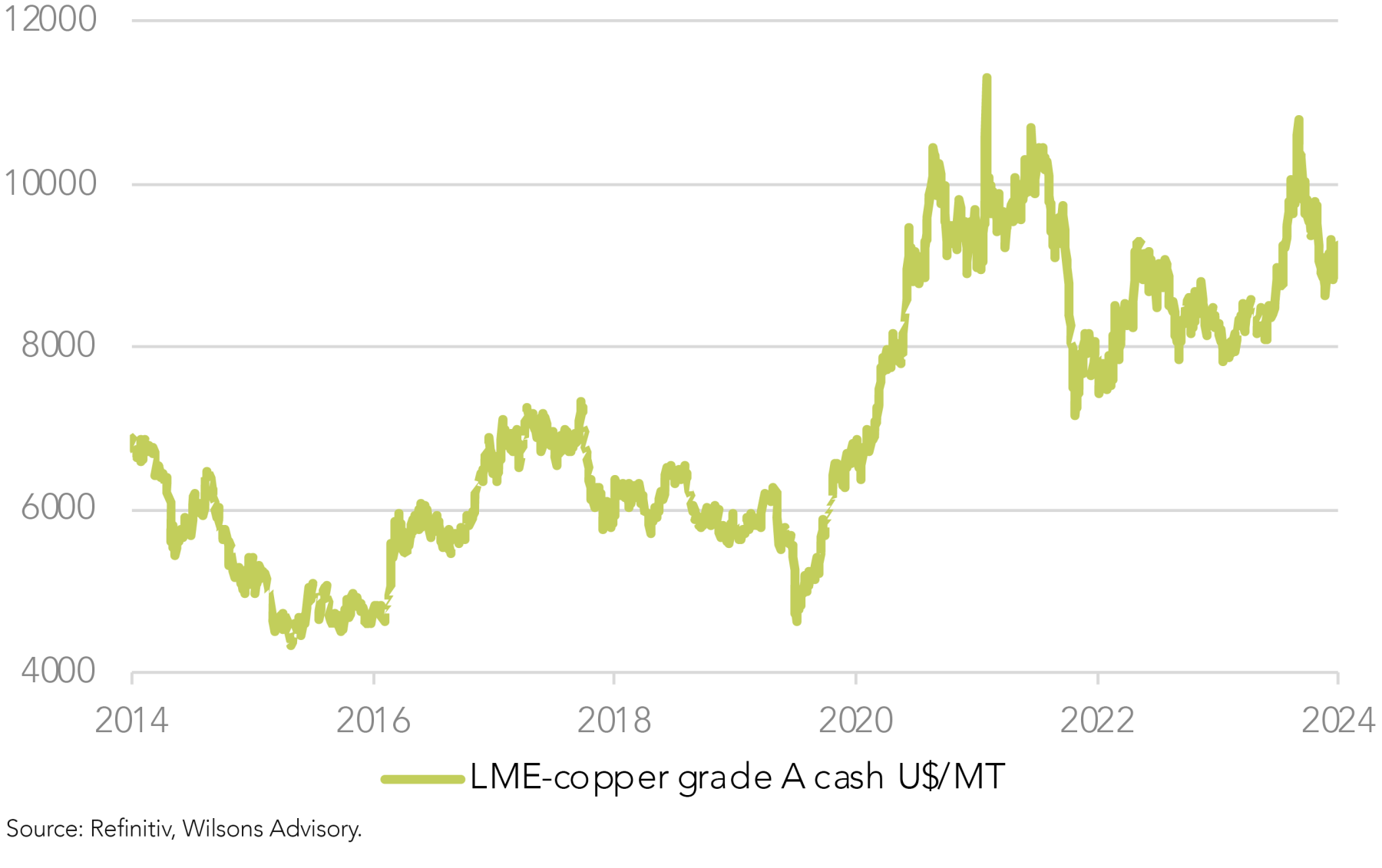
The Fed cuts by 50bp. How worried is the Fed?
As discussed previously, last week marked the start of what is likely to be a significant phase of policy easing from the US Federal Reserve. While the Fed’s outsized start to the US easing cycle was not completely unexpected, it does mark a significant pivot from the rhetoric of recent months. Is the Fed becoming particularly nervous around US growth prospects?
Fed Chair Jerome Powell said in the post-rate cut press conference that “this decision reflects our growing confidence that with an appropriate recalibration of our policy stance, strength in the labour market can be maintained in a context of moderate growth and inflation moving sustainably down to 2%".
Powell also said the rate cut marked a "strong start" to protecting strength in the economy and the labour market, and should be seen as a commitment to not falling behind the curve.
Chair Powell cautioned against thinking 50 bp rate cuts were the new pace, and several times pointed to the Fed’s “dot plot”, which suggest a slower 25 bp per meeting pace for the next two meetings.
This is projected to be followed by another full percentage point in 2025, and by a final half of a percentage point in 2026, to end in a 2.75%-3.00% range.
The endpoint reflects a slight upgrade from 2.8% to 2.9% in the longer-run Federal Funds Rate, considered a "neutral" stance that neither encourages nor discourages economic activity. This is a slower pace of easing relative to market pricing, which expects the Fed to reach the ~2.9% neutral rate by the end of 2025.
Chair Powell's message was also that the Fed is learning about how restrictive policy is as they go along. The slowing in the economy we have seen in recent months indicates to the Fed that policy is quite restrictive. Thus, the Fed feels it needs to dial back restrictiveness, rather than wait and risk the labour market expansion slowing further.
"We're going to be making decisions meeting by meeting based on the incoming data, the evolving outlook, the balance of risks”
Chair Powell - Fed Chairman
Backdrop still supportive but watching tail risks
At the current juncture, we agree with the Fed that a recession can be averted and a soft landing achieved. The Fed is watching the data closely in respect of its reaction function. We agree with the Fed that at this stage the data still seems very consistent with a soft landing scenario.
This should, all things equal, be a supportive backdrop for equites, bonds, the Australian dollar and selected commodities with positive structural drivers (e.g. copper). We are, however, negotiating a slower phase of US/global growth, combined with uncertainties around China’s structural growth potential, as well as uncertainties around the result and impact of the US presidential election. We remain well diversified and relatively balanced in terms of our tactical asset allocation.
Learn more
Wilsons Advisory think differently and delves deeper to uncover a broad range of interesting investment opportunities for their clients. To read more of our latest research, visit our Research and Insights.

